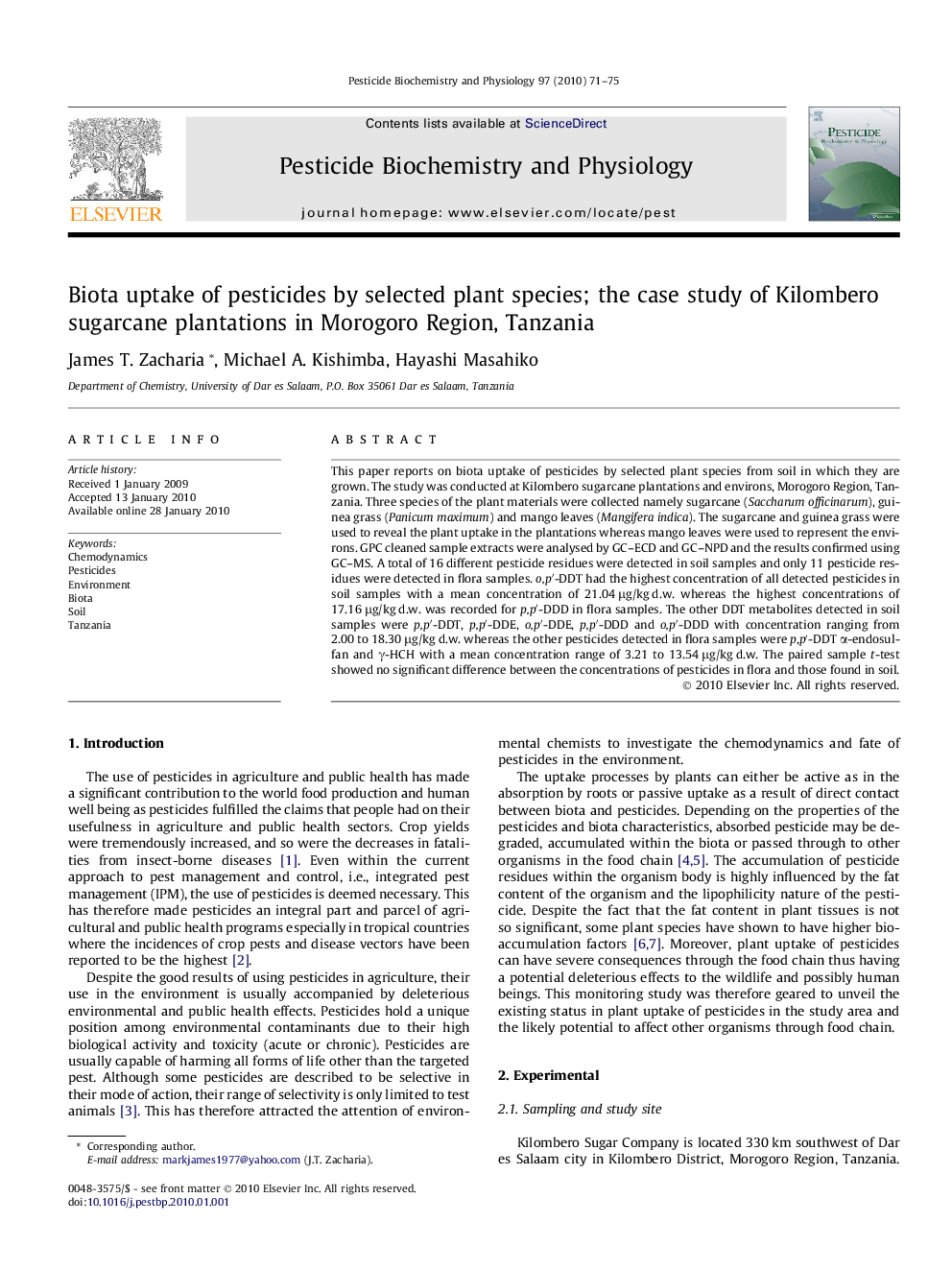| Article ID | Journal | Published Year | Pages | File Type |
|---|---|---|---|---|
| 2009469 | Pesticide Biochemistry and Physiology | 2010 | 5 Pages |
This paper reports on biota uptake of pesticides by selected plant species from soil in which they are grown. The study was conducted at Kilombero sugarcane plantations and environs, Morogoro Region, Tanzania. Three species of the plant materials were collected namely sugarcane (Saccharum officinarum), guinea grass (Panicum maximum) and mango leaves (Mangifera indica). The sugarcane and guinea grass were used to reveal the plant uptake in the plantations whereas mango leaves were used to represent the environs. GPC cleaned sample extracts were analysed by GC–ECD and GC–NPD and the results confirmed using GC–MS. A total of 16 different pesticide residues were detected in soil samples and only 11 pesticide residues were detected in flora samples. o,p′-DDT had the highest concentration of all detected pesticides in soil samples with a mean concentration of 21.04 μg/kg d.w. whereas the highest concentrations of 17.16 μg/kg d.w. was recorded for p,p′-DDD in flora samples. The other DDT metabolites detected in soil samples were p,p′-DDT, p,p′-DDE, o,p′-DDE, p,p′-DDD and o,p′-DDD with concentration ranging from 2.00 to 18.30 μg/kg d.w. whereas the other pesticides detected in flora samples were p,p′-DDT α-endosulfan and γ-HCH with a mean concentration range of 3.21 to 13.54 μg/kg d.w. The paired sample t-test showed no significant difference between the concentrations of pesticides in flora and those found in soil.
